Anúncios
When you start exploring the different types of home loans, it’s easy to feel like you’re wading through endless jargon. But this is an exciting phase—you’re on your way to becoming a homeowner. In this ultimate guide, you’ll find friendly explanations of the main mortgage options, how they work, and how to figure out which fits you best. You’ll see how loan terms, interest rates, credit scores, and down payments all play a part. By the end, you’ll have a clear idea of which path might lead you to the home you’ve been dreaming about. Ready to dive in?
Know the basics
Before going deeper, let’s get a quick handle on what a mortgage actually is. Simply put, a mortgage is a home loan that uses your house as collateral. If you fail to keep up with payments, the lender can reclaim the property. This might sound scary, but it’s standard practice whenever you borrow money to buy a home.
Mortgages typically come in two broad categories: conventional and government-backed. Conventional mortgages are funded by private lenders like banks or credit unions. Government-backed loans (for example, FHA or VA) are insured or guaranteed by a government agency to reduce risk for lenders. Each category offers multiple sub-options that vary in requirements and perks—so if you’ve heard terms like FHA, USDA, or jumbo loans, they all land under these broader groups.
Most folks sign up for a 15-year or 30-year mortgage, making monthly payments until the loan is fully paid. You’ll pick the term that balances your monthly budget with how fast you want to become mortgage-free. Some loans also feature adjustable interest rates instead of a fixed rate, so your monthly payment can change over time depending on market conditions.
If you’re just starting your search, you can use a home affordability calculator to get a ballpark figure of how much house you can afford. This tool estimates how a mortgage payment fits into your overall budget, factoring in interest rates, loan terms, and down payments. Once you’re ready to shop around, you can also look at pre-approval for a home loan so you know your maximum borrowing limit.
Compare conventional mortgages
Conventional mortgages are not part of a government program, meaning they are funded by private entities—banks, credit unions, or mortgage companies. These loans often reward good credit with better interest rates and manageable monthly payments. They usually require at least 3 percent down, with a 20 percent down payment tidily removing the need for private mortgage insurance.
Fixed-rate mortgages
A conventional fixed-rate mortgage locks in your interest rate for the entire life of the loan. You’ll know exactly what to pay each month, so these mortgages are popular among buyers who prefer predictability. If you plan to stay in the same home for many years, a fixed rate can protect you if overall rates climb.
- How it works: You lock an interest rate now, and it doesn’t change, even if the broader market does.
- Key benefit: Steady monthly payment, no big surprises.
- Ideal for: Anyone seeking reliability, especially if you plan on staying put for a while.
Adjustable-rate mortgages
An adjustable-rate mortgage (ARM) starts with an enticingly low introductory rate, which can make your monthly payments more affordable in the first few years. After that fixed introductory period—often 3, 5, or 7 years—your rate adjusts based on a market index plus a set margin. If you expect to move or refinance before the rate resets, you might save money with an ARM. But you’ll need to be comfortable with the possibility of rising payments down the road.
- How it works: Your initial rate is locked for a few years, then adjusts regularly based on market rates.
- Key benefit: Lower up-front monthly payment.
- Ideal for: Buyers who might move, refinance, or see a solid increase in income before the rate adjusts.
If you’re set on a conventional mortgage but want help comparing lenders, check out our guide on best mortgage lenders. You’ll get tips on what to look for, from interest rate quotes to top-notch customer service.
Explore government-backed options
Government-backed home loans can be a game-changer if you have average credit, limited savings for a down payment, or other unique circumstances. These loan types are insured by federal agencies, making lenders more comfortable lending to folks who might not qualify for a conventional mortgage.
FHA loans
FHA loans are backed by the Federal Housing Administration, offering more accessible credit and down payment requirements. You might qualify for an FHA loan with a credit score as low as 580 if you can put 3.5 percent down. If your score is even lower, around 500, you might still get approved with a 10 percent down payment.
- How it works: The FHA insures the loan, encouraging private lenders to offer more flexible terms.
- Down payment: As low as 3.5 percent for credit scores of 580 or higher.
- Ideal for: First-time buyers, folks with past credit challenges, or those needing a lower initial outlay.
VA loans
The U.S. Department of Veterans Affairs backs VA loans for veterans, active-duty service members, and certain surviving spouses. One of the biggest perks is the possibility of putting 0 percent down if you qualify. These loans typically feature no private mortgage insurance (PMI) requirement, which saves you money.
- How it works: The VA guarantees a part of your loan, letting lenders offer more favorable terms.
- Down payment: Potentially 0 percent.
- Ideal for: Qualifying military service members or spouses who want lower costs and no PMI.
USDA loans
If you dream of living in a rural or suburban area, USDA loans might be your ticket to affordable homeownership. Backed by the U.S. Department of Agriculture, these loans usually come with competitive interest rates and may even have 0 percent down payment options.
- How it works: The USDA guarantees the loan for eligible properties in rural locations.
- Down payment: Often 0 percent if you meet location and income guidelines.
- Ideal for: Buyers who meet the USDA’s location and qualifying criteria.
Government-backed loans also include specialized programs like the Indian Housing (Home) Loan Guarantee Program (Section 184) or the Native American Direct Loan (NADL). If you’re an American Indian, Alaska Native, or a veteran married to someone who is, you could benefit from tailored programs that keep down payments and interest rates low.
Look at special programs
There are a few extra programs that might suit your situation, especially if you’re dealing with energy efficiency upgrades, or you want to tap the equity in a home you already own.
Energy-efficient mortgages
Energy-efficient mortgages (EEMs) help you finance energy-saving improvements at the time of purchase or when you refinance. You can use this loan to upgrade insulation, replace outdated windows, or install solar panels. By lowering your energy bills, you keep more cash in your pocket each month.
- How it works: An EEM is attached to a typical mortgage but includes financing for upgrades that reduce home energy use.
- Key benefit: Save on utility costs, possibly boost your property value.
- Ideal for: Buyers excited about making eco-friendly home improvements.
Home equity loans
If you already own a home and you’ve built up some equity (the difference between what you owe and the home’s current value), a home equity loan can help you tap that money for home renovations or big expenses. This is a second mortgage, typically with a fixed interest rate. You borrow a lump sum and pay it back in installments over 5 to 30 years.
- How it works: The lender lets you borrow a portion—often up to 80 percent—of your home equity.
- Key benefit: Access to lower-interest financing compared to credit cards or personal loans.
- Ideal for: Owners who want to use built-up equity for home improvements, college tuition, or consolidating high-interest debt.
Native American Direct Loan program
For American Indian and Alaska Native veterans, the Native American Direct Loan (NADL) program can be a big help. You might qualify for a low-interest, fixed-rate mortgage with no down payment requirement on certain federal trust lands.
- How it works: The VA directly funds these loans, so no private lender is involved.
- Key benefit: Competitive interest rates, no down payment needed.
- Ideal for: Veterans who are American Indian or Alaska Native (or married to someone who is) and plan to build or buy on federal trust land.
Understand down payments and credit scores
You’ve probably heard down payment rules that range all over. A 20 percent down payment has often been touted as ideal. But based on the latest data from the National Association of Realtors, first-time buyers in 2023 had a median down payment of 8 percent, while older buyers sometimes put down far more.
Different loan programs have unique requirements:
- Conventional loans: As low as 3 percent for certain programs, though 20 percent avoids private mortgage insurance.
- FHA loans: 3.5 percent with a credit score of 580 or above.
- VA loans: 0 percent for qualified veterans.
- USDA loans: 0 percent for eligible rural properties.
All of this hinges on your credit score too. Conventional lenders typically want a 620 credit score or higher. FHA loans can go as low as 500 with a 10 percent down payment, or 580 with 3.5 percent down. VA and USDA loans often have minimum score guidelines around 580 to 620, though actual requirements vary by lender.
If you need extra help gathering a down payment, look into down payment assistance programs. These resources, often run by state or local agencies, can give grants or secondary loans that help bridge the gap. If you have a solid job history and an acceptable debt-to-income ratio, these programs could lighten your cash-on-hand burden.
Check your eligibility
Every lender will check your credit history, employment details, and your debt-to-income ratio. But if your credit score is below 700, that doesn’t mean you can’t become a homeowner. You might pay a higher interest rate or need to show solid savings or consistent employment. The crucial thing is that you find the right loan for your situation.
Don’t be shy about shopping around, either. Different lenders have different criteria, and you might get approved by one but not another. This is another reason to compare quotes from multiple places, even if you already have a favorite bank.
Also, think about whether you want a primary residence, a second home, or an investment property. Many loan programs—like those from the USDA or VA—only approve loans for your main residence. Others, like jumbo loans, can be used for more expensive second homes, but you’ll typically need strong financial credentials to qualify.
Make sense of your rate
Interest rates influence how much you pay over the long haul. Understanding how they work can help you plan your budget and even switch up your loan choice. Just remember, all mortgage quotes come with an annual percentage rate (APR). APR factors in not just the interest rate but also lender fees, so it’s a useful number for comparing offers side by side.
Fixed vs. adjustable rates
A fixed interest rate won’t change for the entire loan term, whether that’s 15 or 30 years. Adjustable-rate mortgages offer a lower teaser rate for the first few years, then shift based on a financial index. An ARM has caps that limit how quickly and how much the rate can climb, but your monthly payment may still see noticeable changes over time.
- Fixed rate: Predictable payments, but you might start with a higher rate than ARMs.
- ARM: Lower initial costs, less predictable future payments.
Points, margins, and indexes
Mortgage points (also called discount points) are fees you can pay at closing to reduce your interest rate. For some buyers, paying points pays off if you’re staying in the house long enough to break even on that upfront cost.
For ARMs, the index is a benchmark interest rate that your loan’s rate follows. Then the loan’s margin is added to the index to determine your final rate. If indexes go up, your rate might go up too, though you’ll have rate caps that keep things from shooting too high in a single adjustment.
Compare loan types
Different mortgages fit different circumstances, so a side-by-side look can help you pick the best match. Here’s a quick snapshot to guide your search:
| Loan type | Credit score requirement | Down payment | Key benefits | Who it’s best for |
|---|---|---|---|---|
| Conventional fixed-rate mortgage | 620+ | 3% (20% avoids PMI) | Predictable monthly payment, stable rate | Buyers staying long-term, prefer stable budgeting |
| Conventional adjustable-rate (ARM) | 620+ | 3% (20% avoids PMI) | Lower initial payment, good for short stays | Buyers who plan to move or refinance before rate adjusts |
| FHA loan | 580+ (or 500 w/ 10%) | 3.5% (with 580+) | Lower credit requirement, flexible terms | First-timers, lower credit, smaller savings |
| VA loan | 580+ | 0% | No PMI, often easier approval, great rates | Eligible veterans, service members, surviving spouses |
| USDA loan | 580+ | 0% (rural areas) | Low or no down payment, rural property focus | Buyers looking in qualifying areas with moderate/lower income |
Note: Lenders sometimes have stricter requirements than the official government minimums. Always double-check with a trusted lender for the specifics of your situation.
Plan your next steps
- Check your credit report: Pull your free annual credit report from each bureau and look for errors. A few points of credit improvement can bring down your interest rate or help you switch to a more flexible loan program.
- Budget for closing costs: Whether you’re aiming at 3 or 20 percent down, you’ll also need money for loan fees, inspections, appraisals, and other costs. Keep a pad in your account for these items.
- Shop for lenders: Compare quotes from three to five lenders. Look at the interest rate, APR, closing costs, and how the loan officer communicates. Sometimes excellent customer service can be the deciding factor.
- Get pre-approved: As soon as you have a loan type in mind, apply for pre-approval for a home loan. It clarifies your budget and strengthens your position when you make an offer on a house.
- Start house-hunting: Use a home affordability calculator and your pre-approval letter as your guides. Stay open-minded to new neighborhoods, especially if rural properties or VA-eligible homes could expand your choices.
If you’re not quite ready to buy, consider saving up and boosting your credit score. Paying down debts improves your debt-to-income ratio. You can also look into down payment assistance programs if you qualify. State or local housing agencies often have grants or deferred loans that reduce your out-of-pocket expense.
Extra tips for success
- Monitor interest rates: Mortgage rates can change daily. If you see a great rate, you might want to lock it in quickly.
- Stay organized: Keep pay stubs, bank statements, tax returns, and other important financial documents on hand. Lenders require a paper trail.
- Be cautious about credit activity: Avoid taking on new loans or credit cards while house-hunting. A sudden credit pull or new debt can affect loan approval.
- Ask questions: Never feel shy about calling your lender or real estate agent to clarify jargon. It’s your money and your future home, so you deserve full transparency.
Final thoughts for you
When deciding on the types of home loans that fit best, ask yourself how long you plan to stay in the house, how stable your income is, and how comfortable you are with risk. Maybe a fixed-rate mortgage is your go-to for lasting peace of mind. Or perhaps an ARM can save you money if you’re certain you’ll move in a few years. You also have government-backed loans—perfect for those who can’t meet the stricter requirements of a conventional mortgage.
No matter which route you choose, the ultimate goal is a home that fits your lifestyle and finances. With a little research and some planning, you’ll soon be unlocking your front door, confident you’ve chosen the right mortgage for you. Good luck on your journey, and don’t forget that the path to homeownership is meant to be exciting. Keep asking questions, compare offers, and celebrate every step—because you’re that much closer to having a place you can truly call your own.








